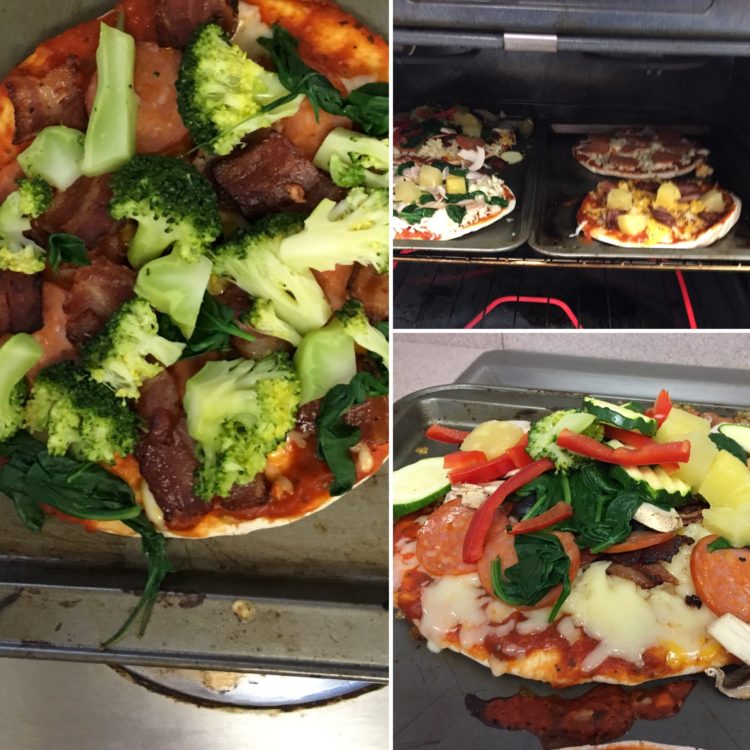As children we learned about “good” food and “bad” food.
We still use language that includes words like “healthy” and “junk” and “crap” and “bad.” We were told what to eat and what not to eat. Moreover, the multibillion-dollar diet industry has given us a vocabulary around food and eating that focuses on shame, blame and deprivation.
Two of my passions are eating disorder advocacy and neuroscience. I am so intrigued by the relationship between messages children take in about food/eating and the neuropathways that are created. As adults, we need to shift what we use as our vocabulary when addressing children (or anyone!) about issues of food and eating.
Norman Doidge wrote, “neurons that fire together, wire together,” ie, negative messages about particular foods or eating behaviors combined with experiences of eating (or choosing not to eat) create neuropathways of shame and blame.
For example, last week I overheard a mother say to her child, “stop eating like a pig,” while her son ate some candy. In his mind, the taste, scent, sight and memory of the candy was connected to shame. If this kind of shaming language continues, the neurons will connect the information so a neuropathway is created that is automatic and candy becomes associated with shame. This type of neural connection leads to an unhealthy relationship with food.
The incredible thing about the brain is that we can rewire it. We can intentionally wire new neurons to create new neuropathways.
“The messages we give to our children have a powerful role in shaping their relationship with food. Our words have long-term consequences regarding how our children learn to think about food and can either positively or negatively impact eating habits.”
– Donna Hollinger, Registered Dietician
Using words like good/bad, or healthy/unhealthy puts parameters around food that can lead to problematic thoughts and behaviors for children who are predisposed to eating disorders or who already have an eating disorder.
Studies have shown that giving positive “do” messages about health are more effective than negative “don’t” messages. Such as, “eating protein will help your muscles grow” as opposed to “don’t eat fries for lunch they are unhealthy.” Or, “making our heart stronger will keep our bodies healthy” as opposed to “don’t eat too much fat or you’ll have a heart attack.”
I decided I needed to walk the walk and not just talk about this necessary change. So my teaching partner and I tried an experiment. We changed the language we used and we focused on nutrients instead of discussing “healthy” and “unhealthy” foods. In our eighth grade classroom, we began to ban the use of words like “healthy” when it comes to food choices. We use the words “nutrient-rich” and “nutrient-deficient.” The results were beyond what I expected.
For our health project, the students were challenged to make a nutrient-rich pizza. The students made a list and voted on toppings. We did not make suggestions or influence their votes. The ingredient choices they agreed on (understanding that they were not required to use every topping) were:
- pepperoni
- bacon
- pineapples
- mushrooms
- red pepper
- olives
- broccoli
- cheese
We then took the class to a grocery store and had a lesson with a dietician. After that we went to a fast-food pizza chain and ate their nutrient-deficient pizza; what I used to call “greasy unhealthy pizza”. The following day, we took the class to the school kitchen and they chopped veggies, grated cheese, and built their pizzas.
The results were fantastic! Who knew that a group of grade eights would purposely choose vegetables to put on pizza. We have seen their typical lunches and they often are missing ingredients that provide vitamins and minerals; sometimes there isn’t any protein.

Not only did the children choose to put nutrient-rich toppings on their pizza, but they enjoyed every bite of their creation. They concluded that their pizzas tasted much better than the nutrient-deficient pizza from the previous day. One child took home the leftover ingredients and made pizzas for his family.
I would like to encourage you to replace words such as: good, bad, healthy, unhealthy, junk, etc, with words/phrases like:
- nutrients
- nutrient value
- nutrient rich
- low nutrient value
- nutrient-deficient
- balanced eating
- nutrient balanced eating
Instead of saying “we don’t eat junk food,” we can say “let’s eat nutrient rich foods so that our bodies and brains have the building blocks we need to be able to learn.”
Instead of “a beef patty isn’t lunch” we can say “I see you have carbohydrates, protein, and fat. What will you eat today that has vitamins and minerals?”
These statements are both neutral and offer choice, agency and a sense of control.
Eating disorders are a chronic, life-threatening, mental illness. I can guarantee you know someone who has or is predisposed to have unhealthy relationships with food and eating, which could include eating disorders.
We may not be able to change the world, yet we may be able to change the feelings that children have around eating, which can lead to a lifetime positive relationship with food.
Images Via CONTRIBUTOR/FOX TALES ART.

